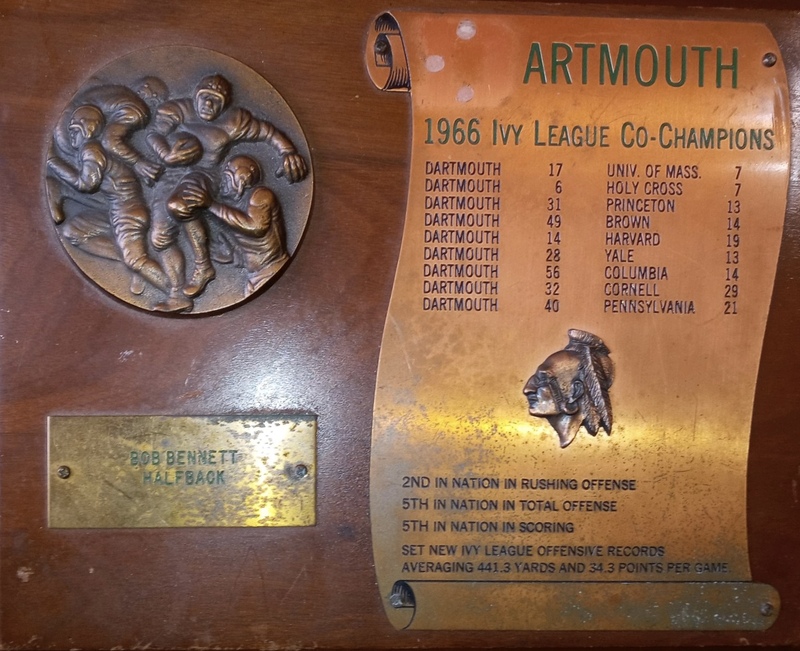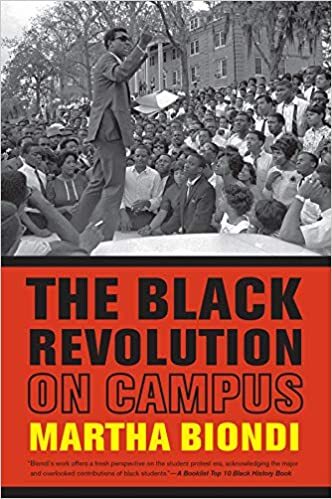Dartmouth Years: Defining Robert Bennett
At Dartmouth College, Bennett graduated with his BA degree in Political Science in 1969. He was able to experience an abundance of new things, like taking French and planning (and attending) several protests. On campus, his main extracurriculars were football and Afro-American Society.
Bennett played football from freshman to junior year. While he originally planned to stay on the team for all four years, he had experienced racism that led him to change his mind. He realized he had been the only Black player on the traveling term, of the five or so Black students on the entire team, and he thought the coaches should have played him and the other Black players more. It was obvious that the coaches had just wanted an all-white team on the field.
"Behind the smiling faces were not always the best intentions, let's put it that way. And the best treatment and the most respected treatment, but it would generally be a smiling face.”
Bennett became passionate about uplifting African Americans during his freshman year at Dartmouth. It began as frequent conversations with his peers about education and the African American community. After that, he became one of the founders of the Afro-American Society and was elected as the chairman of the political action committee. Bennett did not stop there, he then would attend ‘classes’ at the ‘communiversity’ — “an informal classroom structured on Marxism and Pan-Africanism — led by African-American graduate students from the University of Chicago and Northeastern Illinois University”. These events played a major role in providing Black students, not only at Dartmouth but all over the US, quality education about topics that are not often talked about in most predominantly white institutions.
Martha Biondi, African American Studies Professor at Northwestern, wrote The Black Revolution on Campus to analyze the college protests and the Black Power Movement that took place in the late 1960s and 1970s. That time period was crucial for transforming college life, not only for Black students, but for women as well as many other demographics.
"[The protests] forced a tremendous change at Dartmouth and not only eventually brought in white women students, sort of like the civil right — not sort of like, but like the civil rights movement — in the country itself as a whole.”
–Robert Bennett
In the 1800s a similar thing had occurred; the fight against slavery eventually led to the fight for women’s rights in the United States. While these situations are not completely identical, it is evident that Black students protesting racism in a “very aggressive, public” way and persisting until there was change among the administration, also gave white people, specifically women, a platform and confidence to also fight for their rights.
Biondi demonstrates how the power behind the partnership between Black students and their white allies was, and still is, significant. Her book reminds readers of the forgotten stories and individuals that fought hard to change history and make progress throughout our nation. It highlights the courage and commitment of the people that put themselves on the line for justice. She then continues to say how while the white student movements of the late 1960s had attracted more attention, Black student protests had produced a greated campus change. This exact scenario was also described by Bennett during the interview.
"What the universities have failed to realize in almost every case is that the American educational experience is a white experience, an experience based on white history, white tradition, white culture, white customs, and white thinking, an education designed primarily to produce a culturally sophisticated, middle class, white American.”
—Biondi, p. 16
Initially, after the George Wallace Riot of 1967, there was a huge outburst of nationwide attention at Dartmouth. There were many television news coverage, as well as frequent updates on The Dartmouth newspaper for students and staff, and many many hate mail coming from people all over the country, even months after the incident. Despite all of this, there wasn’t any change. It was not until the Afro-American Society came together and create a list of demands that administrators actually created change. (More information on the George Wallace Riot will be found on the next page). Robert Bennett is living proof of everything that Biondi stated; he is one of the forgotten students in history books that created a great impact on the Black community at Dartmouth.
The Dartmouth Black generation of the 1960s had accomplished great things that transformed life on campus.
"The university community as a whole— the students, administrative people in the Community, and Dartmouth alumni—they can see that we Black people were not white—meaning that we were ... not there to be white people or to become white people in any way whatsoever, and we were not subservient to them at all. And would not ever—would never be that."—Robert Bennett



